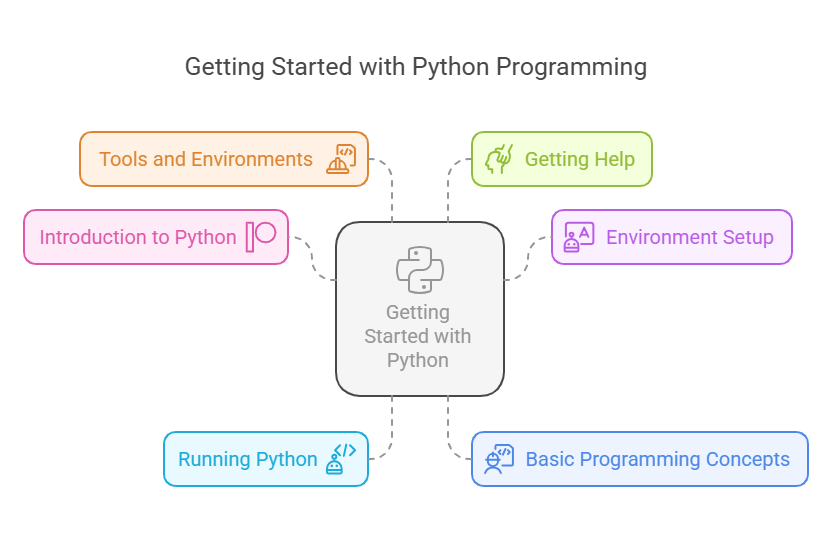How To Get Started On Python

A basic subject addressed in a number of the works is “Getting Started” with Python programming. Typically, these sections lay out the basics of writing and executing Python code, describe what Python is, explain why someone may want to use it, and walk the user through environment setup. A summary of what the sources say about “Getting Started” is provided below:
Introduction to Python:
A number of sites devote their first chapters or portions to providing an overview of Python. This usually entails talking about its qualities and history. One account states Guido van Rossum created Python in late 1989 and launched it early 1991. Automating operations or conducting significant research can inspire the creation of new languages like Python.
Python is powerful, object-oriented, easy to use, free, and open source “glue” language. It can run anywhere and has a vibrant community. According to some reports, Python has become the most used language worldwide, with IEEE Spectrum stating this in 2017. It’s thought to be helpful for anyone who want to work in programming or who want to learn more about fields like robotics, data science, Machine learning, or artificial intelligence.
Constructing Your Environment
The configuration of the programming environment is an essential step in getting started. Getting and installing Python is part of this. Installation instructions for Python 3 are frequently included in appendices. The latest Python can be acquired from http://www.python.org, especially if you don’t use Windows. Python and other tools are included in the Anaconda distribution, which can be obtained and used.
Setting Up Your Environment
After installing Python, the next step is frequently to run it. Often, the interactive interpreter is used for this. The first chapter of one book suggests starting the Python 3 interactive interpreter, noting that it should produce self-descriptive information before displaying a prompt. Using the interactive form of IPython as a calculator is explained in another source. When the interactive interpreter is awaiting statements or more input, it indicates this by using primary (>>>) and secondary (…) prompts.
Writing a “Hello World” program is typical for learning a new programming language. Utilising the print() function, this straightforward program shows the text “Hello, world” and helps make sure your environment (interpreter, settings, editor/IDE) is configured properly. Using a variety of tools, such as Jupyter Notebooks and the IPython interpreter, the sources explain how to write and run Python code. Unlike interactive interpreters, which run code instantly, Jupyter Notebooks need you to input code first, then press a button to run it.
Running Python and Your First Program
Basic fundamentals of programming are also introduced in the first chapters on getting started. Among these are variables, which serve as stand-ins for information that may change. Using the assignment operator (=), values are assigned to variables. Additional fundamental ideas discussed early on include data types, operators, program input/output, comments (line segments of code that are not executed but act as documentation), and indentation, which is used for code blocks.
Basic Programming Concepts
The sources mention other tools for getting started in addition to the simple interactive interpreter. Sublime Text Editor, IPython and Jupyter Notebooks, IDLE, and Python‘s integrated development environment are a few examples. As an online tool for configuring the Python environment, the PyCharm IDE is also mentioned.
Tools and Environments
How to go about getting started. Help(), copyright(), credits(), license(), and other Python procedures can be used to accomplish this. One of the commands you’ll probably use the most is help(). On particular subjects or keywords, you can seek assistance. Internet sources are also strongly advised. R/learnpython, Stack Overflow, blog entries, and the official Python documentation (docs.python.org/3/using/index.html) are a few examples. Certain books also include connections to their own websites or resources.
Exercises
Chapters conclude with exercises and mini-projects to help reinforce understanding the foundational ideas. Supplementary information is occasionally included in these activities.
In conclusion, the sources explain that “Getting Started” with Python entails knowing what Python is and its benefits, installing the required software, running basic code like “Hello World,” learning fundamental syntax and ideas, and using the tools and resources available to practice and enhance comprehension.
